Test in a live environment
Test in production without watermarks.
Works wherever you need it to.
PDF documents are widely used for sharing documents that require consistent formatting across various devices and platforms. It often contains interactive elements such as form fields, annotations, or editable text. However, there are scenarios where we need to flatten a PDF, which means removing these interactive elements and converting them into a static, non-editable format. In Python, we can achieve this using the IronPDF library.
In this article, we will learn how to flatten a PDF file using IronPDF.
FromFile methodFlatten method to flatten a PDF fileSaveAs methodPython is a computer language that helps programmers design graphical user interfaces quickly and easily. Python is also a lot more dynamic for programmers than other languages. As a result, introducing the IronPDF library to Python is a straightforward procedure. To quickly and safely develop a fully functional GUI, a wide range of pre-installed tools, including PyQt, wxWidgets, Kivy, and many other packages and libraries, can be used. We may incorporate a number of features from other frameworks, such as .Net Core, using IronPDF, which does not only support Python. Click here to learn more about Python IronPDF.
IronPDF makes Python web design and development simpler. Django, Flask, and Pyramid are three Python web development paradigms that have seen broad acceptance as a result. Just a handful of the websites and online services that have used these frameworks include Reddit, Mozilla, and Spotify.
Check that Python is installed on your PC. Visit the official Python website to download and install the most recent version of Python that is compatible with your operating system. Once Python is installed, segregate the requirements for your project by creating a virtual environment. The venv module lets you create and manage virtual environments to provide your conversion project a neat, separate work space.
We'll use PyCharm, an IDE for writing Python code, for this tutorial.
Select "New Project" once the PyCharm IDE has launched.
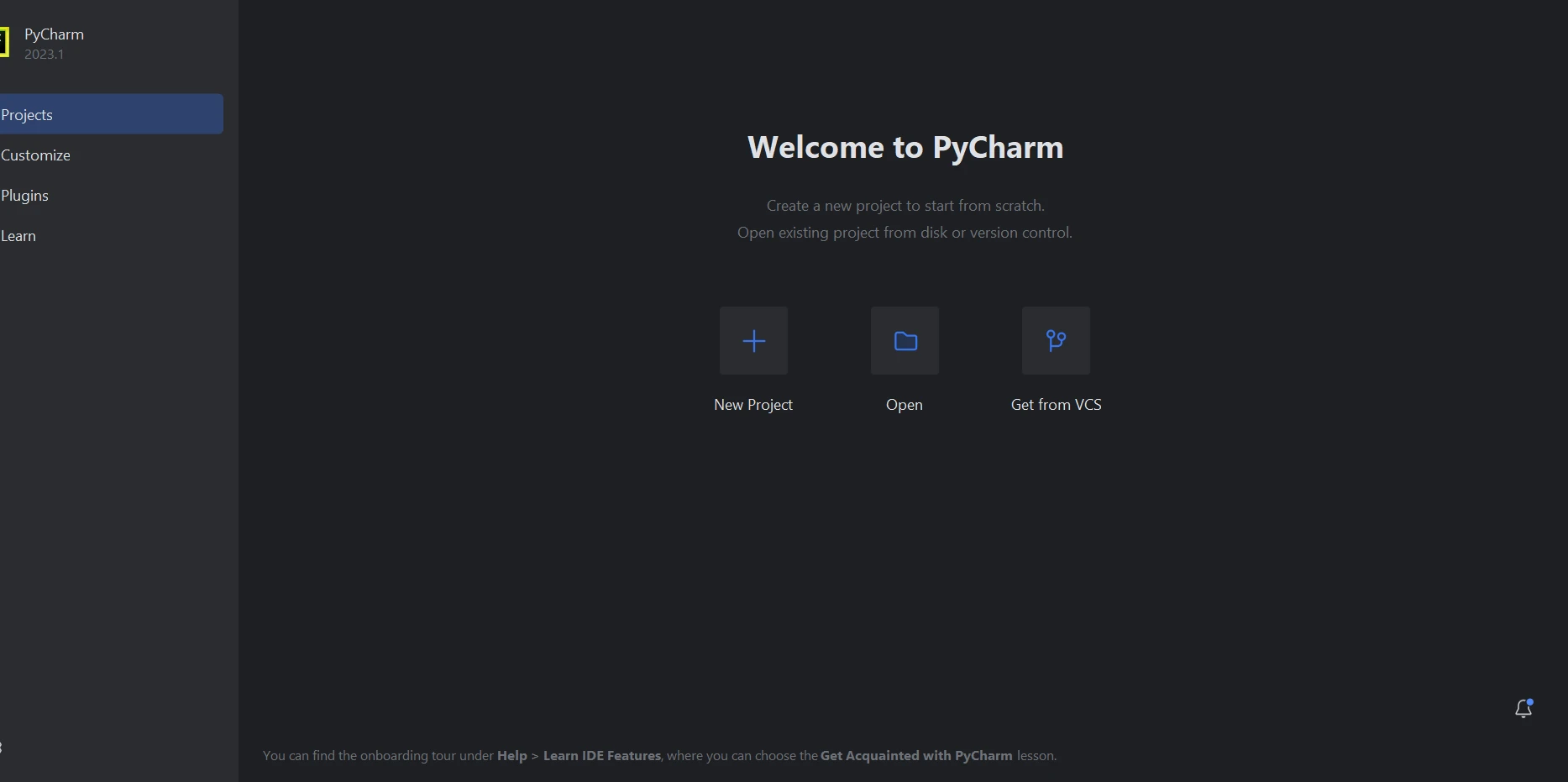
When you select "New Project," a new window will open where you can specify the project's environment and location. The image below may help you see this.
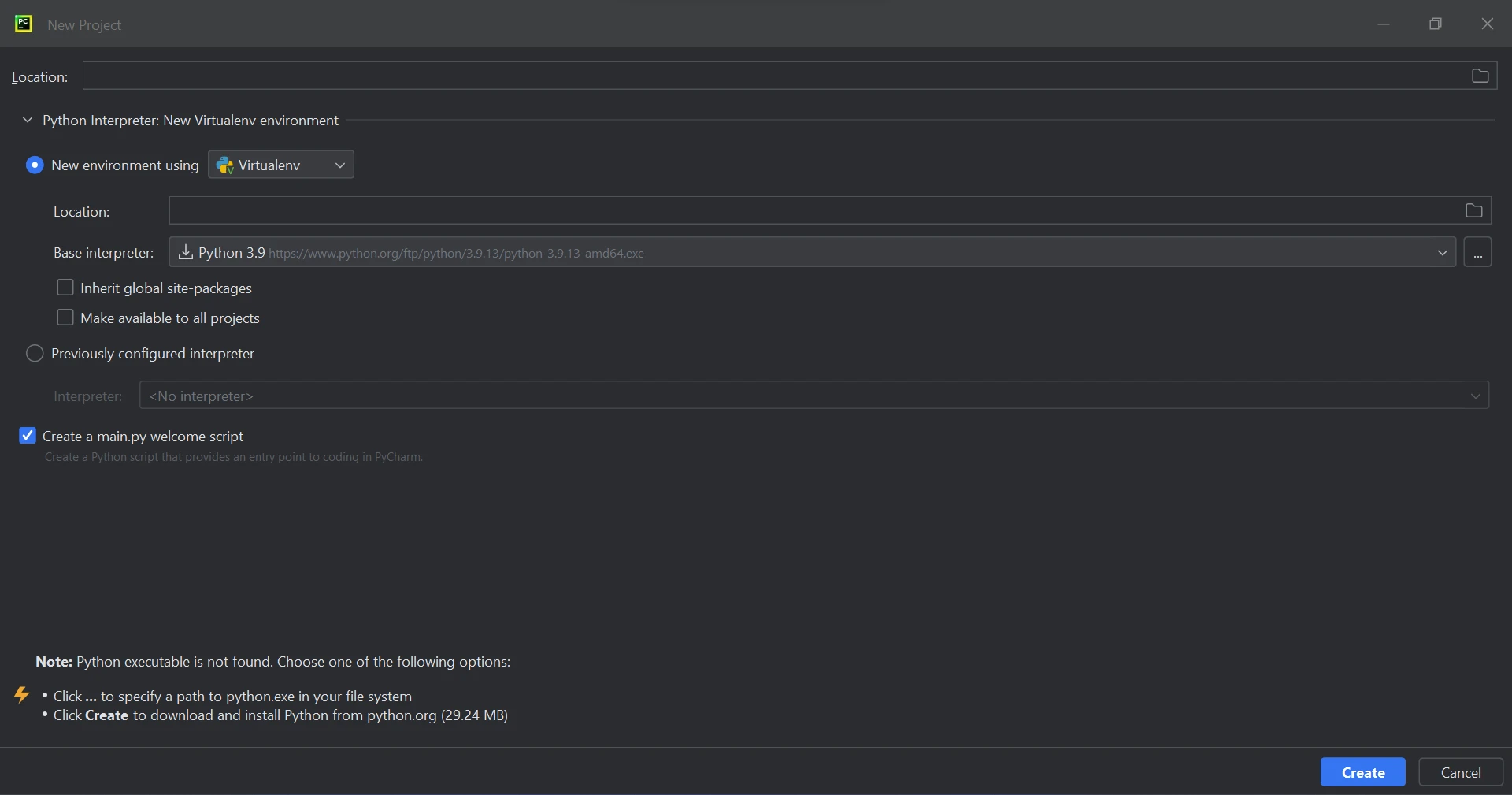
Click the "Create" button to start a New Project after selecting the Project location and environment path. The software can then be built in the subsequent new window that appears. This tutorial makes use of Python 3.9.
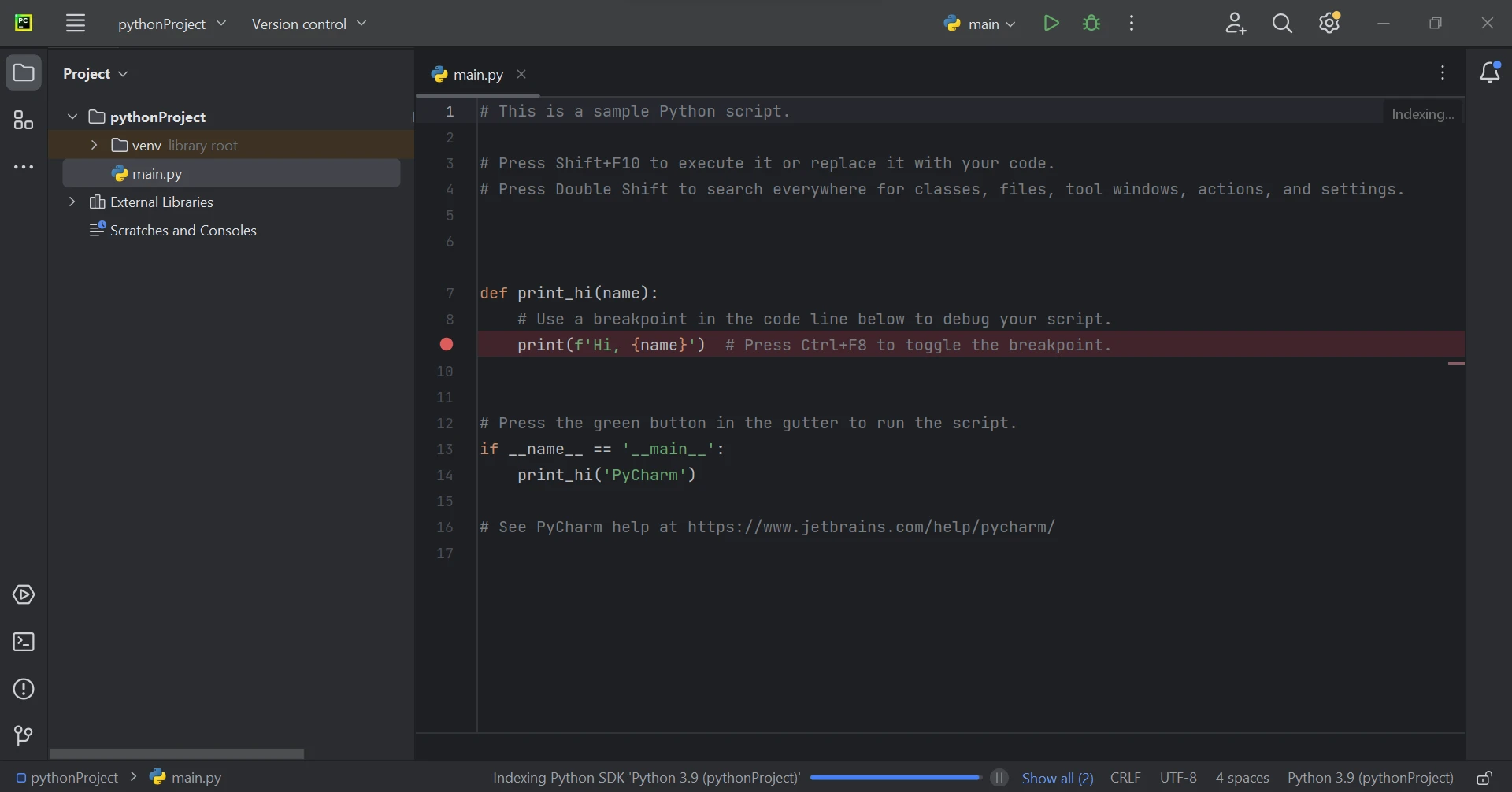
IronPDF for Python, mostly makes use of.NET 6.0. As a result, in order to utilize IronPDF Python, your computer has to have the .NET 6.0 runtime installed. Before Linux and Mac users may use this Python module, Dot NET may need to be installed. To obtain the required runtime environment, go to this page.
The ironpdf package needs to be installed in order to create, edit, and open files with the ".pdf" extension. To install the package in PyCharm, open a terminal window and type the following command:
pip install ironpdf
The screenshot below displays the installation of the ironpdf package.
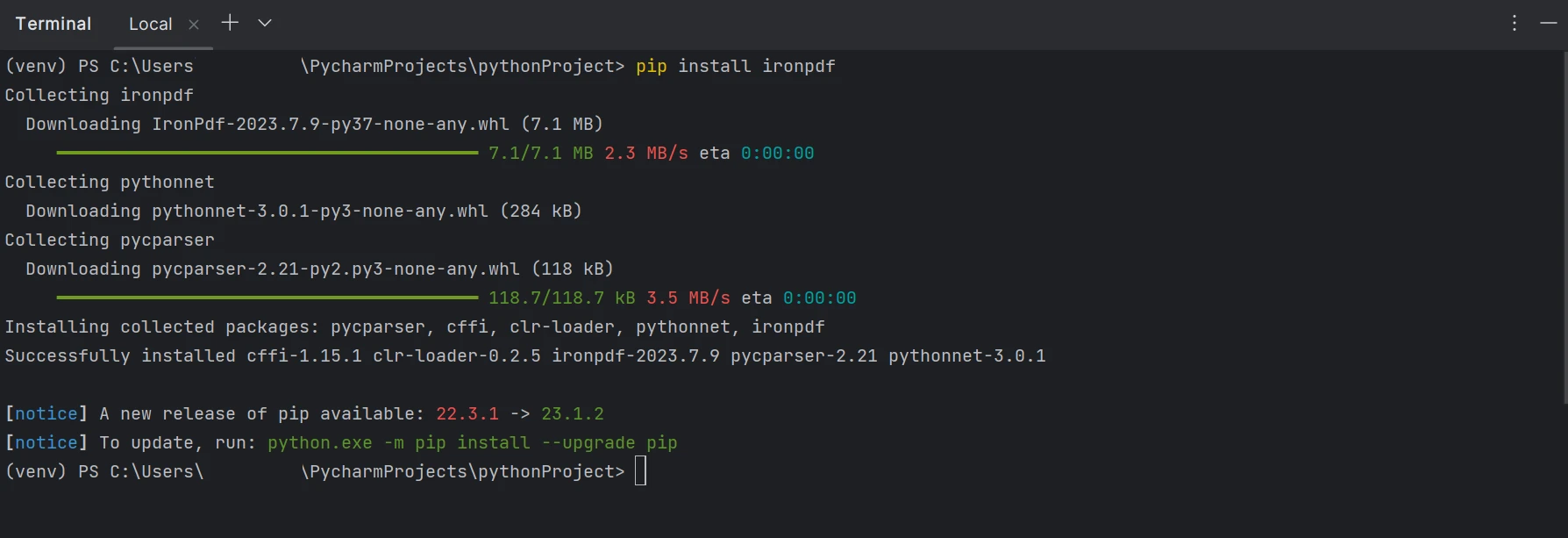
Flatten a PDF can be easily done with the help of the IronPDF. With just a few lines of code, we are able to flatten form fields in a PDF document. Below is the source PDF which has text boxes form with a calendar control we are going to flatten.
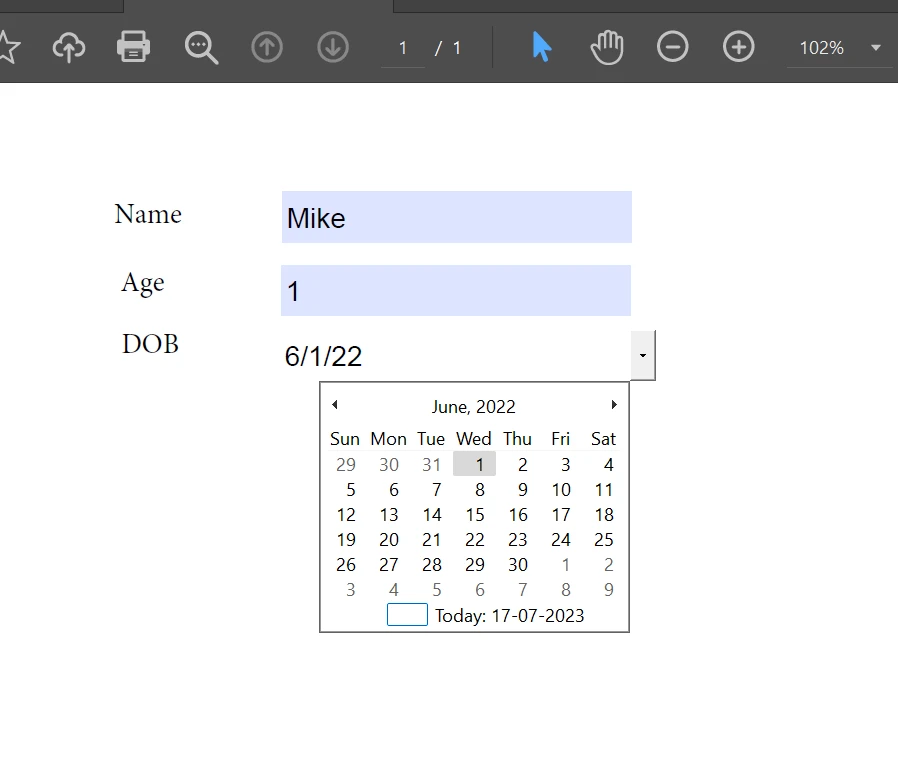
In the PDF form which has three fields, which include two text boxes and one calendar control. It also contains some form field values which we already entered. Below is the sample code.
from ironpdf import *
pdf = PdfDocument.FromFile('F:\\PDF\\EditorDemo.pdf')
pdf.Flatten()
pdf.SaveAs("flattenpdf.pdf")In the above code example, first we are importing the IronPDF library which will allow us to use all the features in the library. Then we are using the PdfDocument class, which allows us to load the existing PDF document to perform various types of operations like merge PDFs, extracting text, images, etc., with the help of the available methods in the PdfDocument class. Now we are using the Flatten method to flatten a PDF file. This function allows us to remove all the fields present in the PDF form such as the text boxes and calendar control, and the PDF file size drops. At last, we are using the SaveAs() method to save the generated flattened PDF document into the desired location.
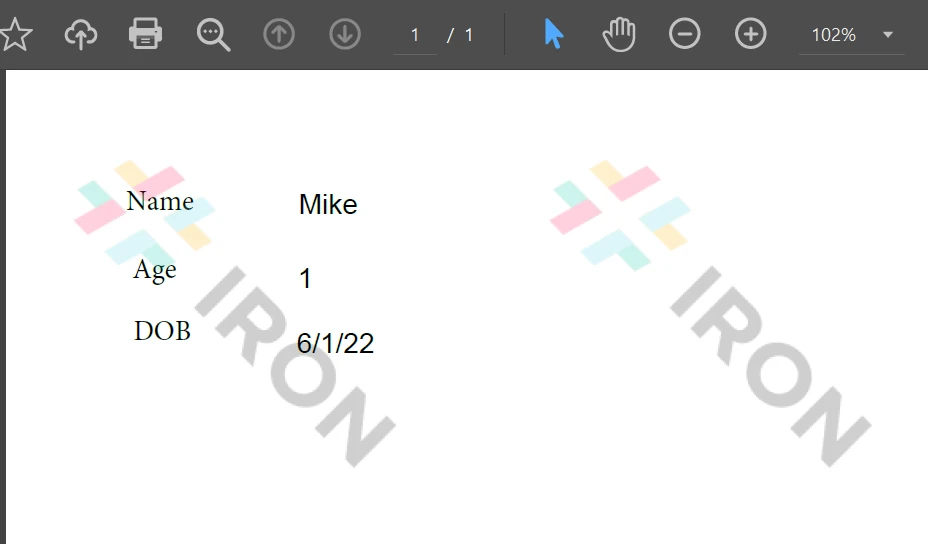
For more details on Flattened PDF, visit this code link here.
The IronPDF library provides robust security methods to minimize risks and ensure data protection. It is compatible with all widely used browsers and is not limited to any particular one. IronPDF allows programmers to easily create and read PDF files with just a few lines of code. To accommodate the various needs of developers, the IronPDF library provides a variety of licensing options, including a free developer license and additional development licenses that are available for purchase.
The $749 Lite package comes with a perpetual license, a 30-day money-back guarantee, a year of software support, and upgrade possibilities. Beyond the initial purchase, there are no more costs. Production, staging, and development environments all make use of these licenses.
IronPDF also offers free licenses with a few time and redistribution limitations. During the trial license period, users can evaluate the product in actual use without a watermark. For more information on how much the IronPDF trial edition costs and how to license it, please click the following link.
9 .NET API products for your office documents








